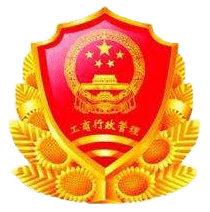
首页
HTRF KINASE-GST BIND. DISCOVERY KIT


品牌: Revvity
 下载产品说明书
下载产品说明书 下载SDS
下载SDS 用小程序,查商品更便捷
用小程序,查商品更便捷



 收藏
收藏
 对比
对比 咨询
咨询
产品介绍
产品信息
Overview
The best known kinase inhibitor, Gleevec (Imatinib), binds a non-activated form of Abl. Such inhibitors are therefore more difficult to detect using activity based assays, so it is worthwhile to set up kinase binding assays for your kinase of interest in order to avoid missing out on such compounds.
HTRF® kinase binding assays are easily set up, using a mix and measure detection format in the absence of ATP.
Direct displacement of the fluorescent-inhibitor from the ATP binding pocket is measured, enabling the affinity of your inhibitor to be determined by performing dose response curves.
Purified kinase preparation is less critical compared to enzymatic assays, since measurements can be performed on kinases which have little or no activity.
Specifications
| Assay Points | 1 |
|---|---|
| Assay Target Type | Kit |
| Assay Technology | HTRF |
| Brand | HTRF |
| Quantity | 1 |
| Shipping Conditions | Shipped in Dry Ice |
| Therapeutic Area | Metabolism/Diabetes Neuroscience Oncology & Inflammation |
| Unit Size | 1 Unit |
Video gallery
How it works
Kinase-GST discovery kit assay principle
The binding of the tracers is detected in a sandwich assay format using a specific Anti GST antibody labeled with Europium Cryptate (donor), which binds to GST-tagged Kinase, and a red fluorescent tracer labelled with d2 (acceptor). The HTRF ratio (665/620) will increase upon the addition of more of the tracer, and will saturate depending on the dissociation constant (Kd) of the tracer to the GST-tagged kinase. The Kinase-GST binding Discovery Kit helps determine which tracer might be best suited to setting up your binding assay . The tracer with the best assay properties (depending on the Kd and assay window generated) will be chosen to perform competitive binding assays.

Kinase-GST discovery kit assay protocol
Saturation binding experiments with the three tracers (i.e. Staurosporine-Red, Dasatinib-Red, and Sunitinib-Red) can be run on 96- or 384-well plates (20 µL final volume). First, a dilution series ranging between 0 and 1 µM of tracer in the Kinase Binding Buffer is prepared in a 96-well non-binding plate. Next, 5 µL of Kinase Binding Buffer are dispensed into the final 96- or 384-well plate. Then 5 µL of GST tagged-Kinase are added, followed by 5 µL of Anti-GST Eu-cryptate. Finally, 5 µL of the red tracer solution are added. The HTRF ratio is measured after 1 H of incubation.

Assay validation
Saturation Binding SRC-GST
A typical saturation binding experiment is performed using final tracer concentrations between 0 and 250 nM, and measuring total- and non-specific binding signals. Subtracting the non-specific from the total binding signal gives the specific signal, which can be analysed to give the Kd. Here an example is shown where the best tracer for inhibitor studies proved to be Staurosporine-Red, with a Kd of 43 nM on 5 nM SRC-GST.

Saturation Binding PDGFRb-GST
A typical saturation binding experiment is performed using final tracer concentrations between 0 and 250 nM, and measuring total- and non-specific binding signals. Subtracting the non-specific from the total binding signal gives the specific signal, which can be analysed to give the Kd. Here an example is shown where the best tracer for inhibitor studies proved to be Sunitinib-Red, with a Kd of 56 nM on 5 nM PDGFRb-GST.

Saturation Binding BRAF-GST
A typical saturation binding experiment is performed using final tracer concentrations between 0 and 250 nM, and measuring total- and non-specific binding signals. Subtracting the non-specific from the total binding signal gives the specific signal, which can be analysed to give the Kd. Here an example is shown where the best tracer for inhibitor studies proved to be Dasatinib-Red, with a Kd of 22 nM on 5 nM BRAF-GST.

声明 :本官网所有报价均为常温或者蓝冰运输价格,如有产品需要干冰运输,需另外加收干冰运输费。







 危险品化学品经营许可证(不带存储) 许可证编号:沪(杨)应急管危经许[2022]202944(QY)
危险品化学品经营许可证(不带存储) 许可证编号:沪(杨)应急管危经许[2022]202944(QY)  营业执照(三证合一)
营业执照(三证合一)